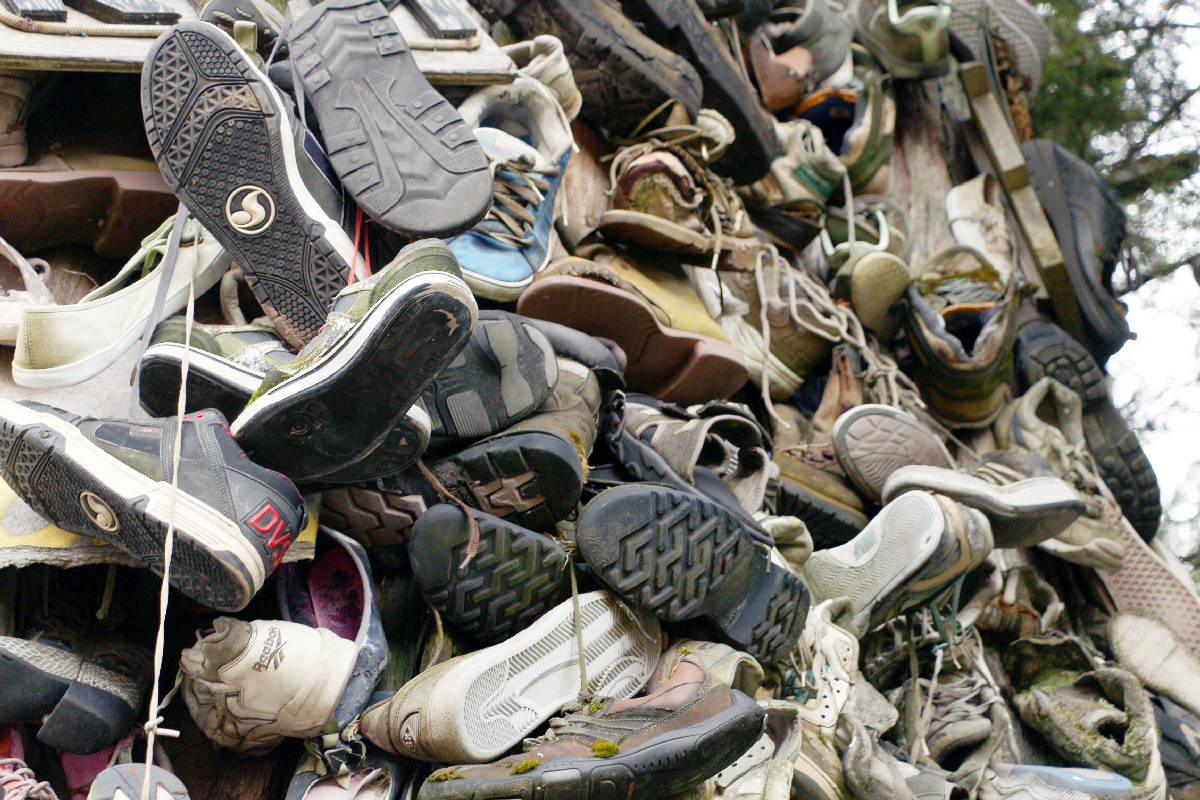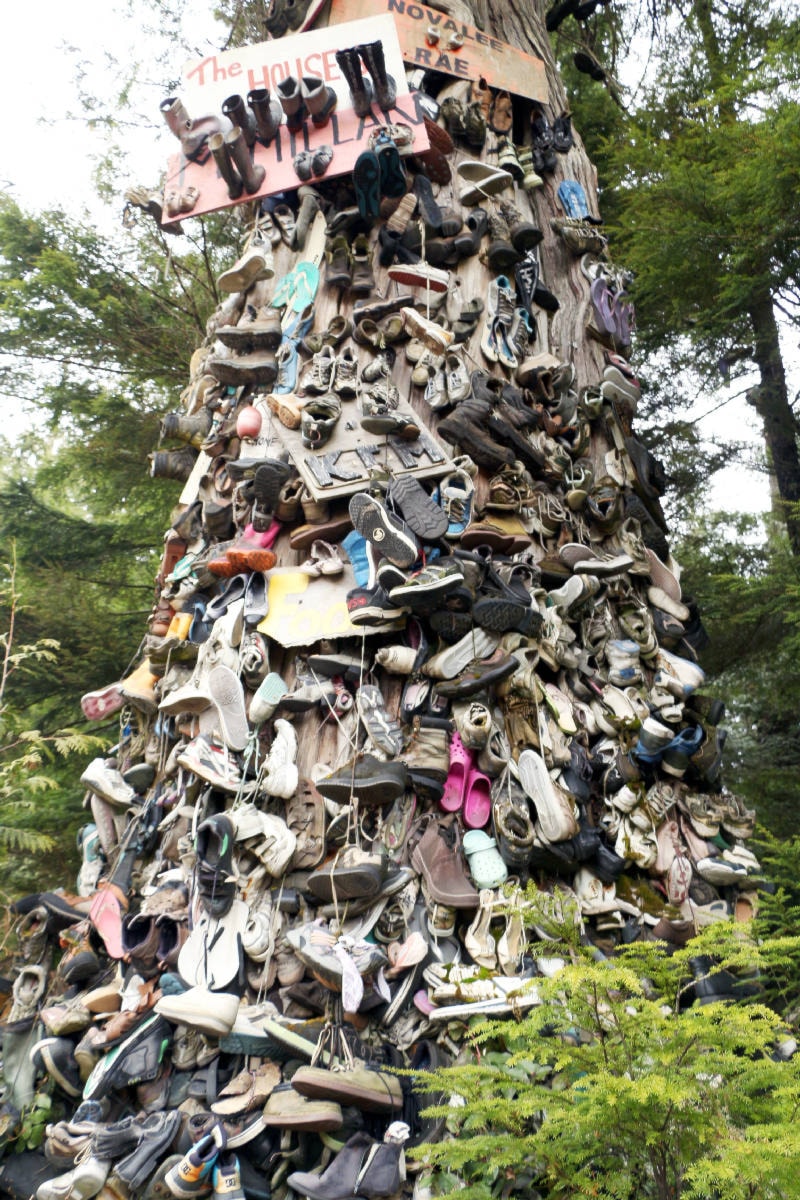The evolution of the shoe tree along Highway 16 began with just one boot, but who nailed the first bit of rubber to the bark?
Gumboots, flip flops and runners decorate the towering old red cedar located near the Butze Rapids Trail just a few kilometres outside Prince Rupert’s city limits.
Legend has it that people leave their shoes behind when they leave town, but that wasn’t the original intention said David Paterson, who claims to have started the shoe tree with a few friends more than 40 years ago.
When Paterson was just a kid, he would sneak off with his friends to smoke cigarettes. But they kept getting caught by friends of their parents. “So we decided to find this place off the road. We rode our bikes up there and there was a trail that takes you all the way down to what was known as Grassy Bay at the time,” he said.
They would hike down and sit on the beach and smoke their cigarettes. The trail was quite muddy, and often one of them would sink into the mud up to the hip. When the friends would pull each other out from the earth, usually a shoe was left deep in the muck.
“As you came back out you were left with one boot on your foot and it looked pretty silly riding down the highway on your bike with one boot, so we started taking them off and hanging them on the branches,” Paterson said.
His group of friends weren’t the only ones discarding their footware on the tree. After the first few boots were hung on the tree, the collection grew. To make a more permanent statement, Paterson and his friends went out with nails one day and nailed their boots to the tree.
Over the years, Paterson has watched as more and more boots were nailed to the tree. The tradition, in his mind, was that if you lost a boot on the hike, then hang the remaining boot on the tree. He doesn’t understand why there are high heels and ski boots up there, no one would be hiking in those.
“It bothers me when I drive by it today because it’s become such a monstrosity,” he said, a purist to the original intention. In his opinion, when he sees full pairs of shoes it’s as though people are just dumping their household garbage.
However, shoe trees are not unique to Prince Rupert. There have been reports of such trees in various regions of Ontario in Hamilton, Springwater, Orangeville — there’s even a bra tree in Collingwood. Canada isn’t the only country in on this peculair tradition, there have been shoe tree sightings in New Zealand and even in the Carribbean’s Grand Cayman, but apparently that was started by a man from British Columbia.
Although shoe trees may exist elsewhere, Prince Rupert’s shoe tree may be one of the most populated with shoes now migrating from the original cedar to nearby trees.
Traditions shift over time and people have reinterpeted the shoe tree to be a place where they leave a piece of them behind.
One family nailed four pairs of gumboots to a board with “The Houses” enscribed in red. They scaled a ladder to leave their mark high on the tree for anyone to see, and remember the family, as they drive into the city.
Anne House was with the RCMP in Prince Rupert for three years and thought the shoe tree was a good tradition to be a part of. In 2013, when the famly left the North Coast for Campbell River the tree was already packed.
“We thought it was a good idea and a good way to leave something behind,” she said over the phone. “Because Prince Rupert is so rainy we thought we’ll never use those gumboots as much again and that was the reasoning why we left our gumboots there.”
There is a story for each of those shoes, sandals and ski boots, left behind and while it may look like a garbage dump to some it’s a tree of memories, or mystery, to others.
Do you think you know the origins of the shoe tree?
Send us an email at newsroom@thenorthernview.com or comment online.

